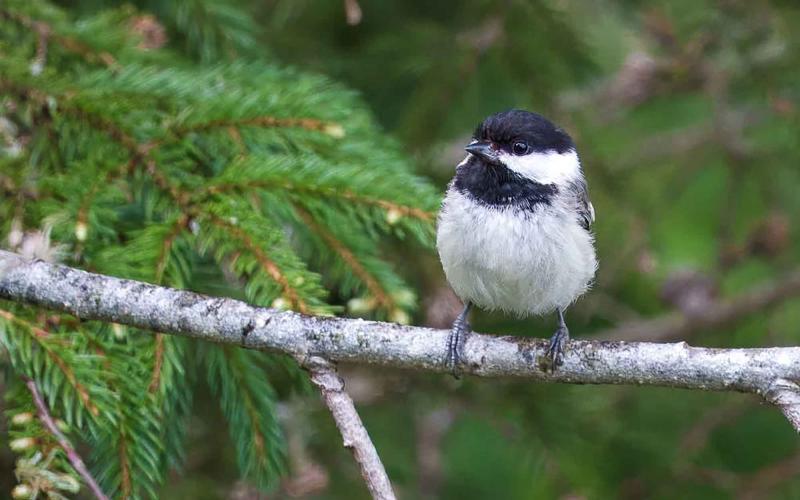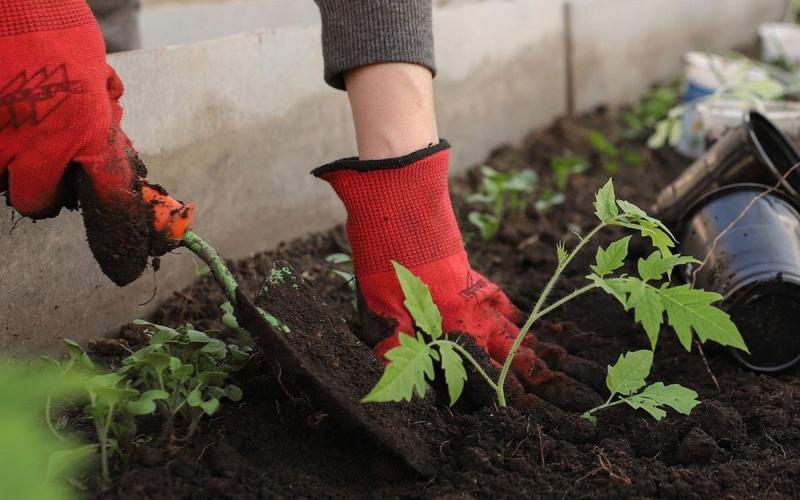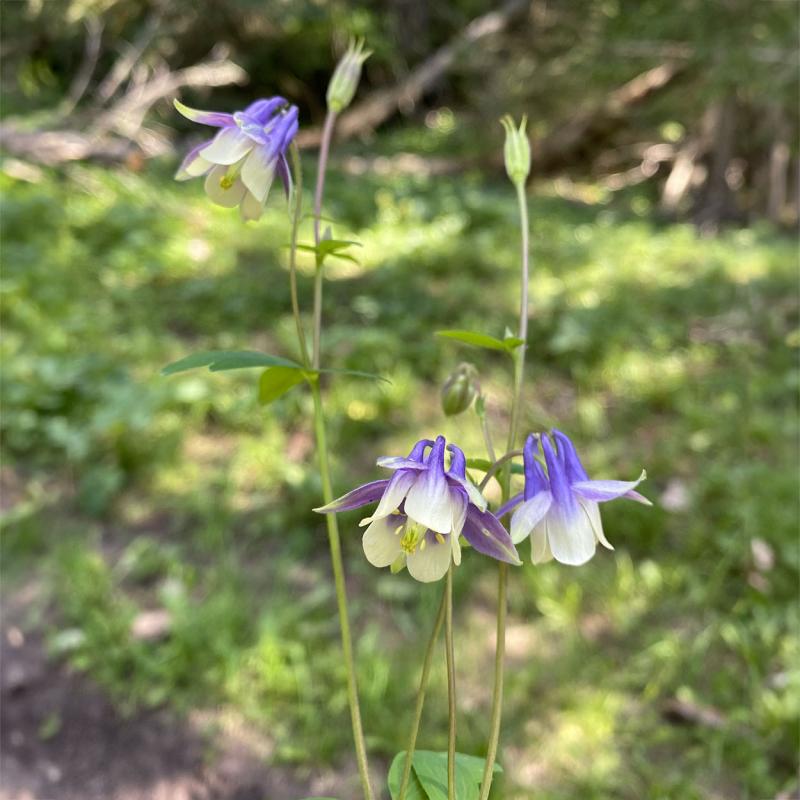
Written by Eric Puetz, Research Associate with the Native Plant Initiative, under the direction and review of Lora Perkins, Associate Professor, in the Native Plant Initiative and the SDSU Department of Natural Resource Management; Robin Buterbaugh, Amanda Bachmann, and Kristine Lang.
Aquilegia brevistyla, or small-flowered columbine, is a native, perennial, herbaceous plant in the Ranunculaceae (buttercup family) that grows in cool, shaded, canyons in the Black Hills of South Dakota (Figure 1). A. brevistyla is considered a boreal disjunct species due to a significant geographic separation between small populations found in South Dakota and Montana in the lower 48 states and the greater range of populations that exist in central and western Canada, which continue into Alaska. Although the Black Hills of South Dakota represent an island in the plains surrounded by semiarid, mixed-grass prairie, this area serves as an ecological crossroads, as this biodiversity hotspot includes species consistent with the northern boreal forests, eastern deciduous forests, and the western Rocky Mountains.
A. brevistyla is commonly found growing on shaded, north-facing slopes in the understory of undisturbed, well-established forests of Black Hills Spruce (Picea galuca), but it is also associated with Ponderosa pine (Pinus ponderosa) and Quaking Aspen (Populis tremuloides) forests. In the Black Hills, this species of columbine is often found in dry creek beds, shaded gravel hillsides, and rocky outcroppings with calcareous soils, but it is also found in granitic and organic soils in the central core of the Black Hills. Therefore, this species is not considered a true calciphile (species associated with limestone-based soils).
Plant Profile
A. brevistyla stands 7 to 31 inches in height (Figure 2); is often glabrous (hairy); exhibits striking, nodding flowers with blue-lavender sepals, white petals, and unique, short blue nectar spurs that are approximately a centimeter long (Figure 3); and exhibits light green, rounded basal leaflets (Figure 4). This columbine’s flowering period typically occurs between late May through July.
Plant
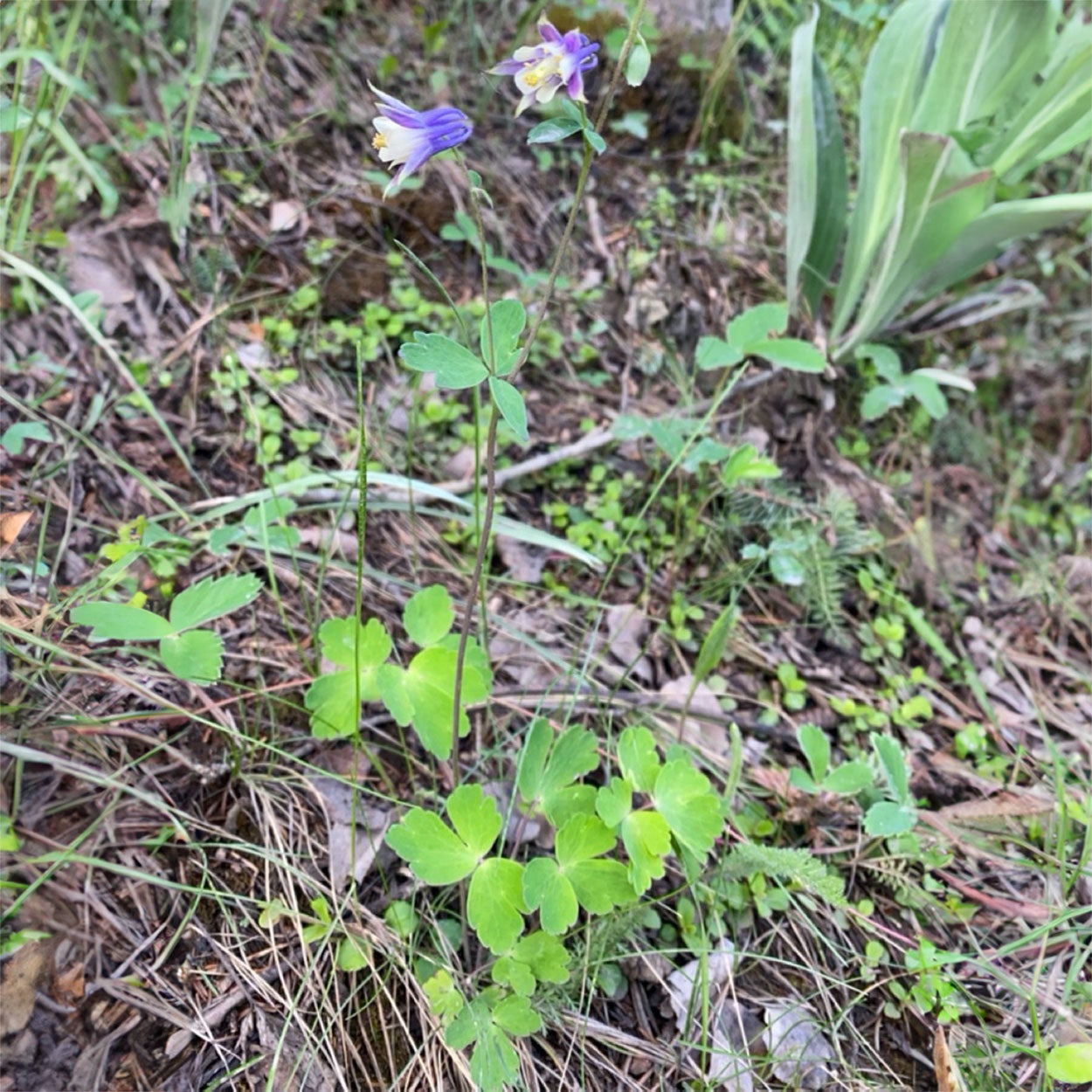
Flower
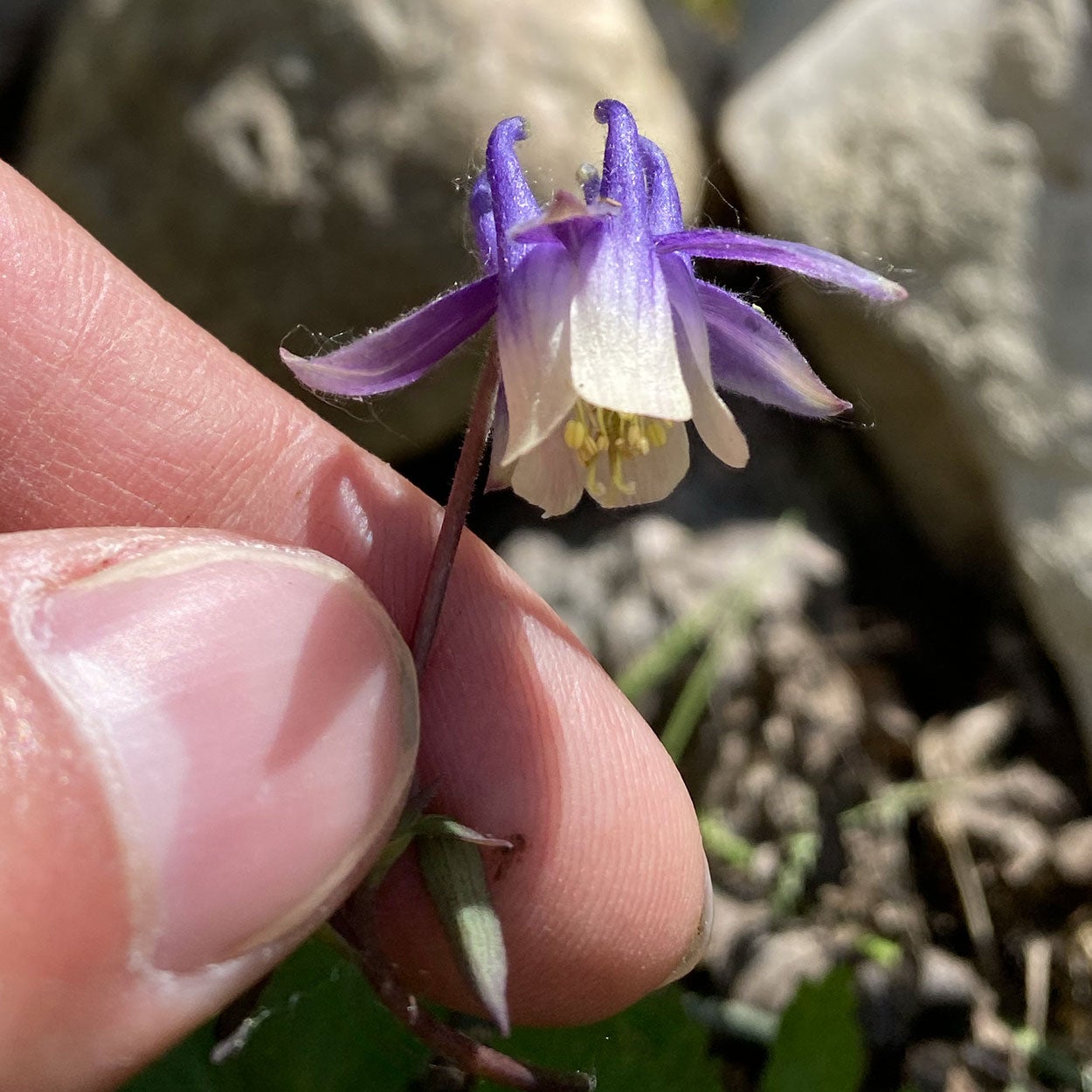
Foliage
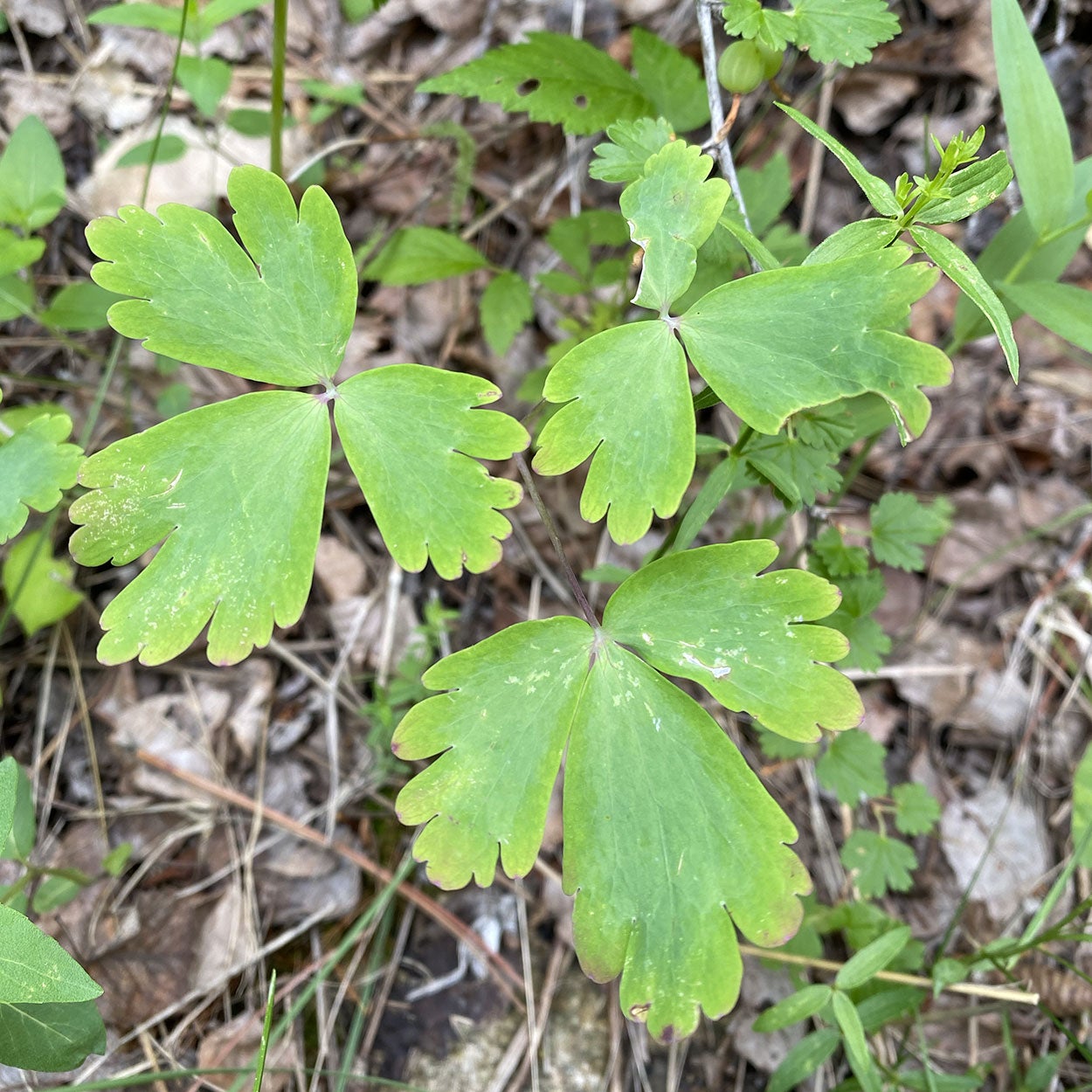
Pollination
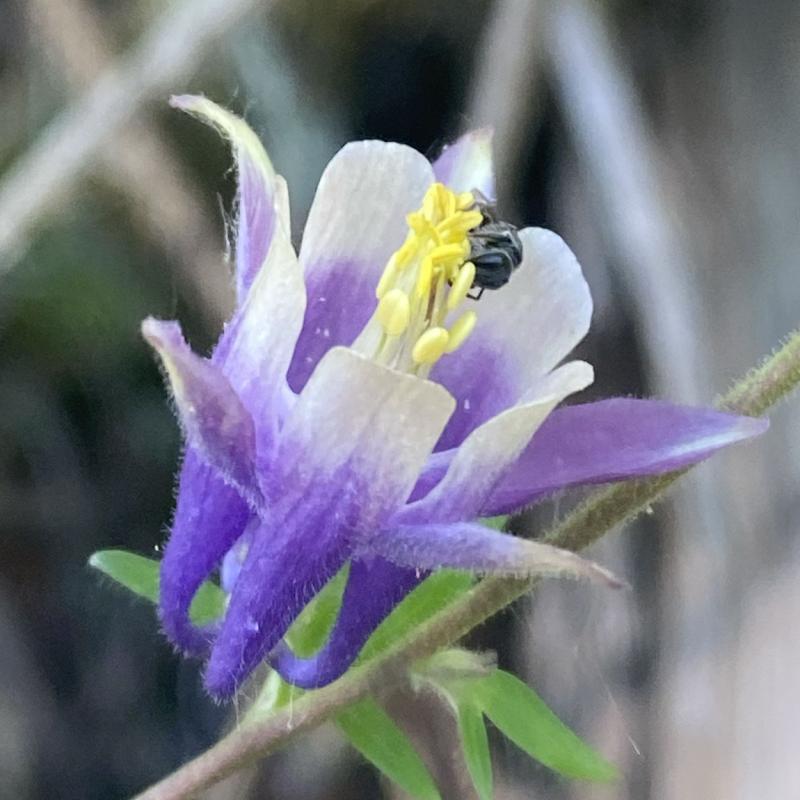
A. brevistyla is primarily pollinated by bees, but it is also known to be self-fertile. Seeds are small, black, and oblong shaped; approximately 1.5 millimeters in length; and are formed in follicle fruits that produce many seeds. However, A. brevistyla also spreads rhizomatously. Seed dispersal is largely unknown, potentially moved via water and precipitation events.
In Your Garden
Adding this native columbine to shady gardens with ample moisture may be of interest to home gardeners. The bright-green, lobed leaves and blue, nodding flowers of this species add character and brighten a shaded garden in the spring. It is also a host plant for moth species, including the Columbine Duskywing (Erynnis lucilius). A. brevistyla is joined by its sister species Aquilegia canadensis (Eastern red columbine), a second native columbine found in the state.
References and Resources
- Plant Propagation Protocol for Aquilegia brevistyla ESRM 412 – Native Plant Production, University of Washington.
- Columbines: The Birds and Bees, U.S. Forest Service.
About the Native Plant Initiative
Native plants are the foundation that supports insects, pollinators (including bees), birds and wildlife.
Learn More